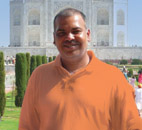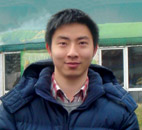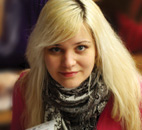BECOMING AN ENGINEER EXTRAORDINAIRE OR IT SPECIALIST IN UKRAINE!
To plan a manned Mars landing, to build the world’s tallest and strongest building, to invent the perpetuum mobile, and finally to create an artificial intellect… Some may say it is just a fantasy. But actually, scientists predict a scientific breakthrough never seen before in the coming thirty or forty years. It is therefore very important for those who want to take part in this rapid development effort to select an occupation and a place of study. Nothing is impossible for a young and talented engineer.
Of course, it is too late for you to create the world’s most powerful aircraft Mriya, the world’s most reliable carrier rocket Cyclone, and the world’s first all-welded bridge, as these engineering feats have already been produced by Ukrainian specialists. However, you can study in Ukraine and learn how to create such things and turn fantasy into reality.
Ukrainian scientists cooperate with powerful international research centers in 45 countries of the world. Among them are such reputed organizations as the International Institute for Applied Systems Analysis (IIASA), European Organization for Nuclear Research (CERN), and European Incoherent Scatter Scientific Association (EISCAТ). Ukraine participates in funding joint projects with the French National Center for Scientific Research (CNRS) and the Scientific and Technological Council of Turkey (ТÜBITAK). Cooperation is underway with such corporations, companies, and concerns as INTEL, MOTOROLA, BOEING, GENERAL ELECTRIC (USA); Folgat AG (Germany); Sodern (France); Sigma Aldrich (Switzerland); Global Metal Technology (Korea); and NORINKO (China), just to name a few. Ukraine is one of the top five space-exploring countries. Ukrainian researchers take part in 25 international scientific projects and Ukrainian companies in 50 commercial projects, the most notable of which are the Sea Launch, Land Launch, Dnipro, and Cyclone-4. Ukrainian researchers also took part in the creation of the Large Hadron Collider, the project of the century.
The Ukrainian school of engineering rests on old traditions and a strong foundation. Many globally recognized founders of research schools studied and worked in Ukraine. In particular, Lev Landau, a Nobel Prize winner, worked in Kharkiv and created a strong research school of physics, and in Kyiv, researcher Yevhen Paton developed unique metal welding technologies. In 1934, he founded the Institute of Electrical Welding under the Academy of Sciences of Ukraine. All his life he developed and improved a method of rapid automatic welding under flux, which later was named the Paton Method. Yevhen Paton developed the methods of design of rational bridge spans, studied their operating conditions, and worked out methods of reconstructing destroyed bridges. A team under his leadership invented an automatic rapid welding method, which came as a significant contribution to technological progress. During World War II, Paton developed and introduced the technology and equipment for welding special types of steel, specifically for tank turrets. In 1953, the name of Yevhen Paton was given to his creation, the 1,543-meter-long, all-welded bridge across the Dnipro River in Kyiv.
Still in the lead worldwide are the research and design schools of Mykhailo Yanhel in spacecraft engineering and Oleh Antonov in aircraft building. The world’s largest aircraft, the AN-225 Mriya, and the world’s most powerful aircraft, the AN-124 Ruslan, are creations of Antonov Design Bureau, a state company and the leader of Ukraine’s aircraft building. The institutions of higher learning that train professionals for the aircraft and rocket-building industry of not only Ukraine but many other countries as well are located in Kyiv and Kharkiv.
Currently, representatives of major international ІТ corporations increasingly mention Ukraine together with India and Russia as a promising country for software development. However, there are a few of those who know that it was Ukraine that actually pioneered computing. The research school founded by Academician S. Lebediev and developed by Academician V. Hlushkov was number one in this field in the former USSR and for a long time successfully competed with IBM, the famous American corporation in developing first-generation computers. The first computer in continental Europe, known as the Small Electronic Computing Machine or MESM, was created in Kyiv in 1951. Before 1982, the Cybernetics Institute and design bureau headed by V. Hlushkov developed and put into production 30 types of various so-called electronic computing machines and computer systems for both the industry and the military, as well as communication networks and equipment. They also developed the necessary software. Kyiv and Kharkiv were homes to the manufactures of onboard computers for submarines, military and merchant ships, and missile systems. For example, the SS-18 missile called Satan and the world’s most powerful carrier rocket, Energy, just to name a few, had their onboard equipment made in Ukraine. Unfortunately, further work in this field was phased out due to the lack of prospects among the Soviet authorities.
However, Ukrainian computer specialists still have potential comparable with the level of many country-IT giants, retaining the traditions of world-class research schools. Currently, Ukraine’s ІТ sector is developing in strides, successfully exporting software and saturating the domestic market. Ukrainian software engineers and administrators take care of servers operating in the U.S., Canada, Europe and other places in the world. Ukrainian software developers, graduates and students of Ukraine’s educational institutions are distinguished by their profound knowledge of mathematics, system analysis, creativity, a bent for complicated and unusual projects, and search for alternative approaches.
The legendary computer games Cossacks and Stalker have already become classics in the world of computer games. These are products of GSC Game World, a Ukrainian company run by young Kyiv programmer Serhiy Hryhorovych. Cossacks was so successful that GSC Game World could invest its own million dollars in its new project Stalker. For this game, the company developed the world’s most precise and complete 3D model of the Chornobyl zone. These games remained in the top ten of world sales ratings for a few years. Currently, the team of GSC Game World is composed of young talented people from all over the world.
Scientific traditions in Ukraine are accumulated and passed from generation to generation. Practitioners from various areas are often invited to lecture at institutions of higher learning to enable students to combine theory and practice. Ukraine’s technical schools are among the best in the world. Proof of this is the excellent performance of Ukrainian students at international competitions.
At the 12th international mathematics competition held in Iran, the Ukrainian team competed with 100 students from 11 countries and won 1 gold, 3 silver, and 2 bronze medals. At the 14th international mathematics competition for university students held in Bulgaria, Ukrainians won 6 gold, 3 silver, and 2 bronze medals, competing with 249 students from 79 universities from all over the world. The sensation of 2007 was the performance of Ukrainians at a software programming competition in Romania. Of the 52 competing teams, all three prize winners were from Ukraine and the top ten included seven Ukrainian teams.
This is the reason why students from all over the world go to Ukraine for a technical education. The high quality and comparatively low tuition – many times lower than in Europe or North America – are the main competitive advantages of Ukrainian technical universities. Experienced lecturers with years of experience and the involvement of students in hands-on tasks are the factors that for decades have been attracting foreigners seeking an education to Ukraine.








